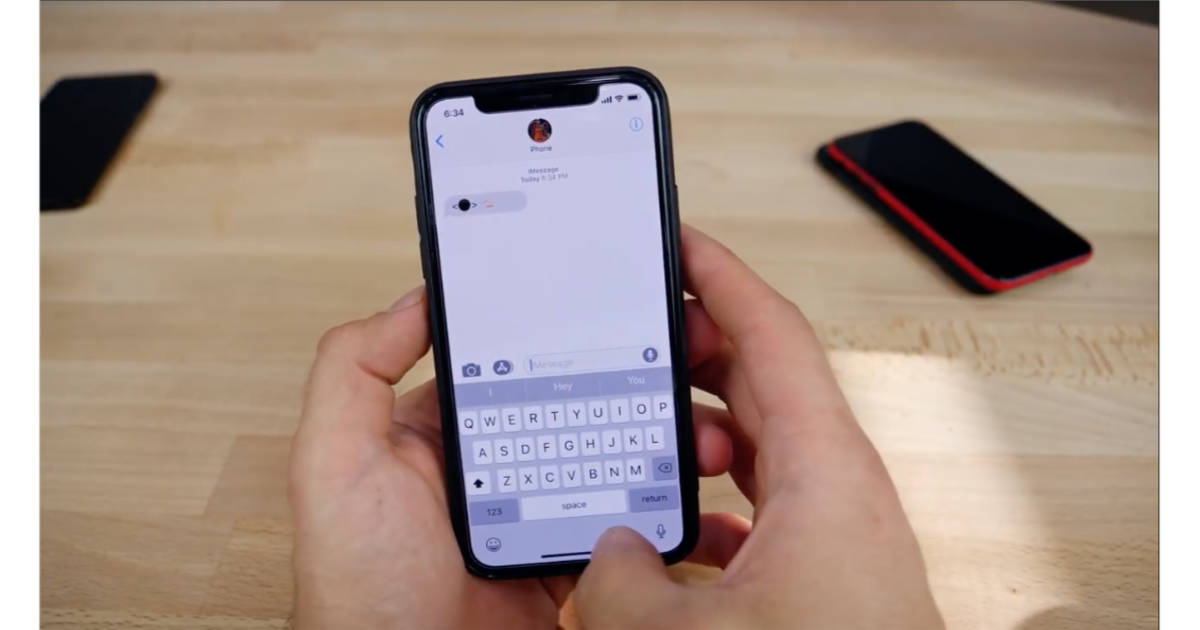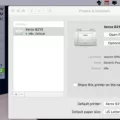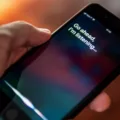The iPhone is a beloved and widely used smartphone that offers users a sleek and cutting-edge display. However, like any electronic device, it is not immune to issues. One common problem that iPhone users may encounter is the appearance of a black spot in the corner of the screen. This can be frustrating and alarming, but fear not, as there are solutions to this problem.
Firstly, it’s important to understand what causes this black spot on the iPhone screen. In most cases, this is the result of a dead or stuck pixel. A dead pixel refers to a transistor that has stopped functioning correctly, while a stuck pixel is caused by a transistor that remains in an on or off state. These defects can occur during the manufacturing process, but they can also develop over time due to wear and tear or accidental damage.
When a dead or stuck pixel is present, it can manifest as a small black spot on the screen, usually in a corner or along the edges. This spot may be constant or intermittent, depending on the severity of the issue. It can be particularly noticeable on lighter backgrounds or when viewing images or videos with lighter colors.
Fortunately, there are steps you can take to address this problem and potentially fix the black spot on your iPhone screen. One method is to try applying gentle pressure to the affected area. Sometimes, this pressure can help revive or realign the stuck or dead pixel, restoring normal functionality. However, be cautious not to apply too much pressure, as this could potentially cause further damage to the screen.
If applying pressure doesn’t yield any results, you can also try using software-based solutions to fix the issue. One such solution is to change your iPhone’s wallpaper. By going to the wallpaper settings in your device’s settings menu, you can add new wallpapers and customize your home and lock screens. Sometimes, simply changing the wallpaper can help disguise or eliminate the black spot on the screen.
If these methods fail to resolve the problem, it may be necessary to seek professional assistance. Apple offers a warranty and repair service for their devices, and they may be able to diagnose and fix the issue. Additionally, there are third-party repair services that specialize in iPhone screen repairs. These professionals have the expertise and tools necessary to address screen-related problems effectively.
The appearance of a black spot in the corner of an iPhone screen can be a cause for concern. However, it is important to remember that this issue is often the result of a dead or stuck pixel. By trying gentle pressure, changing the wallpaper, or seeking professional assistance, you can potentially resolve this problem and restore your iPhone’s screen to its optimal condition.

Why Is My IPhone Screen Leaking Ink?
The phenomenon of an iPhone screen “leaking ink” is a common occurrence that can be attributed to a hardware issue rather than actual ink leaking from the screen. The appearance of an ink-like substance on the screen is typically caused by dead or damaged pixels.
When a pixel on the screen becomes damaged, it may display incorrect colors or appear as a black spot. This can give the illusion of ink spreading on the screen when pressure is applied. The damaged pixel affects neighboring pixels, causing the ink-like appearance to spread.
There are a few possible reasons for dead or damaged pixels on an iPhone screen. These include:
1. Physical damage: Dropping or mishandling your iPhone can lead to screen damage, including dead or damaged pixels. Impact or pressure on the screen can cause pixels to malfunction.
2. Manufacturing defects: In some cases, new iPhones may have pre-existing dead or damaged pixels due to manufacturing defects. These defects may only become apparent over time or with use.
3. Age and wear: Over time, screens can degrade and pixels may start to malfunction. This can result in dead or damaged pixels, leading to the appearance of ink spreading on the screen.
It is important to note that dead or damaged pixels are not repairable by the user and typically require professional assistance. If your iPhone screen is displaying ink-like spots or blobs, it is recommended to contact Apple support or visit an authorized service center for further assistance.
The appearance of an iPhone screen “leaking ink” is not caused by actual ink but rather by dead or damaged pixels. This can occur due to physical damage, manufacturing defects, or normal wear over time. Professional assistance is required to address this issue.
Why Is There A Black Thing In The Corner Of My Screen?
The presence of a black thing in the corner of your screen could indicate a damaged or dead pixel. Pixels are the tiny dots that make up your screen’s display. When a pixel becomes damaged, it may no longer function properly, causing it to appear black. This can occur due to various reasons, such as physical damage to the screen, pressure applied to the screen, or even manufacturing defects.
When a pixel is damaged, it essentially fails to emit any light, resulting in a black spot on your screen. This can be quite noticeable, especially when the rest of the screen is lit up. The black thing in the corner of your screen could be a single dead pixel or a cluster of dead pixels, forming a larger black spot.
Dead pixels are often caused by physical damage, such as dropping or hitting your device, or by excessive pressure on the screen. Additionally, manufacturing defects can also lead to dead pixels appearing on your screen. It’s important to note that dead pixels are usually permanent and cannot be repaired. However, if your device is under warranty, you may be able to get it replaced or repaired by the manufacturer.
In some cases, the black thing in the corner of your screen may not be a dead pixel but rather a result of other screen damage. If your screen is cracked or damaged, it becomes more vulnerable, and the underlying OLED display can also be affected. This can lead to black, blue, or purple spots appearing on your screen.
To summarize, the black thing in the corner of your screen is likely a dead pixel or a result of screen damage. Dead pixels are permanent and cannot be repaired, while screen damage may require replacement or repair of the entire screen.
How Do I Fix The Dark Shadow On My IPhone?
To fix the dark shadow issue on your iPhone, follow these steps:
1. Open the Settings app on your iPhone.
2. Scroll down and tap on “Wallpaper.”
3. In the Wallpaper settings, tap on “Choose a New Wallpaper.”
4. Select the option to add a new wallpaper from your photo library or choose from the available categories.
5. Choose a wallpaper that you want to set as your Lock Screen wallpaper.
6. Once you’ve selected the wallpaper, tap on “Set.”
7. You’ll be prompted to choose how you want to set the wallpaper. Select “Set Lock Screen.”
8. Now, go back to the Wallpaper settings and tap on “Choose a New Wallpaper” again.
9. Select a wallpaper for your Home Screen if you want it to be different from your Lock Screen wallpaper.
10. After selecting the Home Screen wallpaper, tap on “Set.”
11. Again, choose the option to set the wallpaper and select “Set Home Screen.”
12. Now, check your Lock Screen and Home Screen to see if the dark shadow issue is resolved.
If you still notice the dark shadow, try restarting your iPhone by holding down the power button and sliding to power off. Once your device is turned off, press the power button again to turn it back on.
If the problem persists, it might be worth considering updating your iPhone’s software to the latest version. To do this, go to Settings > General > Software Update and follow the instructions to download and install any available updates.
If none of these steps resolve the issue, it’s recommended to contact Apple Support or visit an authorized service center for further assistance.
Why Is There A Black Spot On The Side Of My Phone?
A black spot on the side of your phone can be quite bothersome, and it is likely caused by a manufacturing defect known as a dead or stuck pixel. Let’s delve into the details to understand these issues better:
1. Dead Pixels: Dead pixels occur when one or more transistors in the display panel stop functioning correctly. These transistors are responsible for controlling the individual pixels on your screen. When a transistor dies, it fails to activate the corresponding pixel, resulting in a black spot or a cluster of black spots on your screen. Dead pixels are permanent and cannot be fixed without replacing the entire display panel.
2. Stuck Pixels: Stuck pixels, on the other hand, occur when a transistor gets stuck in either the on or off state. This means that the pixel remains either fully lit or completely dark, resulting in a black spot or a bright spot on your screen. Stuck pixels are often temporary and can sometimes be fixed using software-based methods like pixel-exercising apps or applying gentle pressure on the affected area. However, these fixes may not always be successful, and if the stuck pixel persists, it may require professional repair or replacement.
It’s worth noting that dead or stuck pixels can occur in any electronic display device, including smartphones, TVs, or computer monitors. They are usually considered manufacturing defects and may be covered under warranty, so it’s advisable to check with the manufacturer or your retailer for possible solutions or repair options.
The black spot on the side of your phone could be a dead or stuck pixel, caused by a malfunctioning transistor in the display panel. Dead pixels are permanent and require panel replacement, while stuck pixels may sometimes be fixed using software-based methods or gentle pressure. If the issue persists, contacting the manufacturer or seeking professional repair is recommended.
Conclusion
The appearance of an ink stain or blob on an iPhone screen is not actually due to the presence of ink, but rather a result of dead or damaged pixels. This can occur when the screen is cracked, making it more vulnerable to damage. When the OLED display is affected, black, blue, or purple spots may appear on the screen. Additionally, individual pixels can become damaged, causing them to stay turned off and appear as black spots.
Fortunately, there is a potential solution to fix these issues. By going to the wallpaper settings and adding new wallpapers, starting with the Lock Screen first and then customizing the Home Screen if necessary, it is possible to rectify any strange shadows or black spots on the screen.
It is important to note that these black spots can sometimes be the result of a manufacturing defect known as dead or stuck pixels. Dead pixels occur when a transistor stops functioning correctly, while stuck pixels are caused by a transistor being stuck in an on or off state.
Understanding the causes of these screen issues and knowing how to troubleshoot them can help iPhone users address and potentially resolve any unwanted black spots or shadows on their screens.







